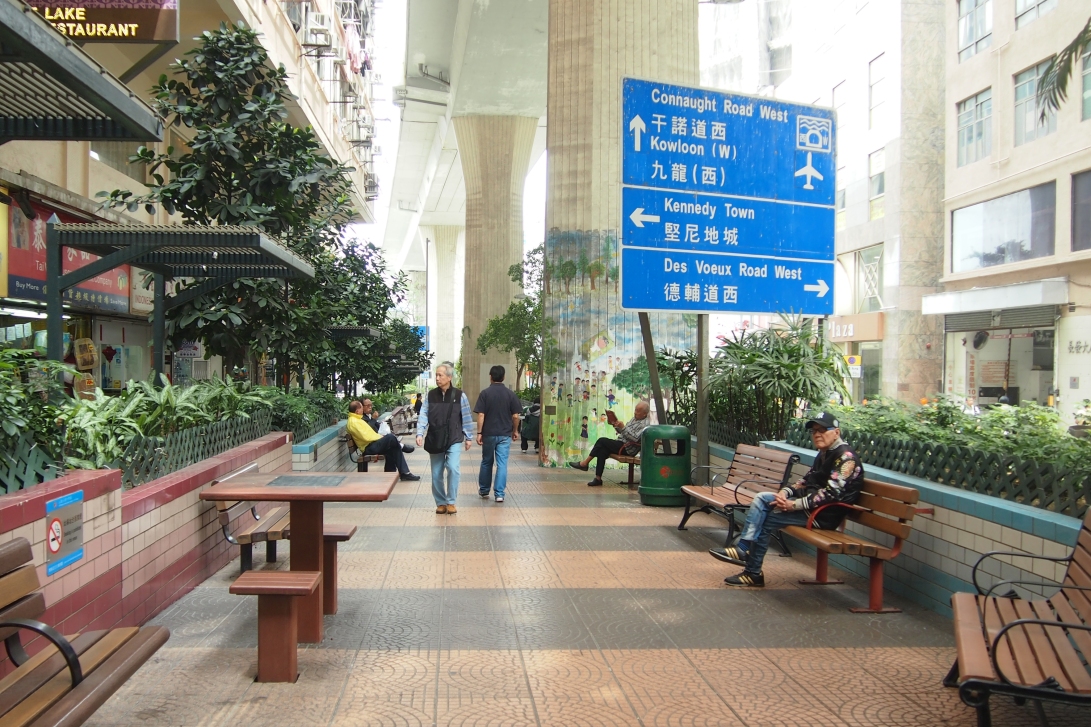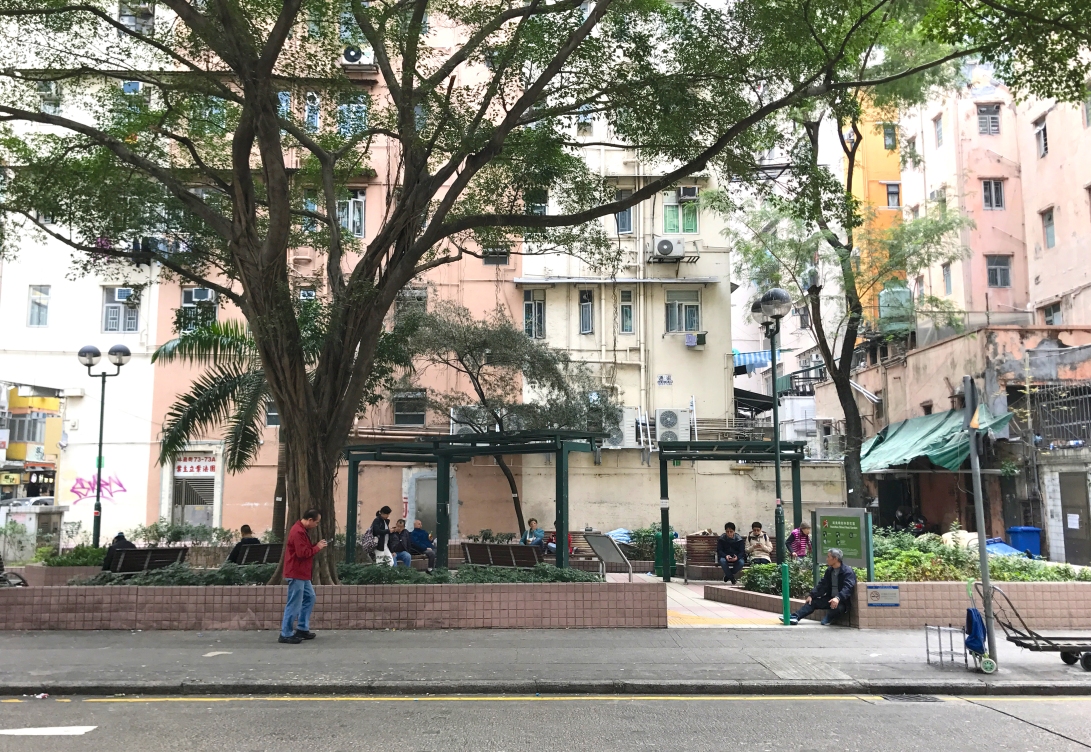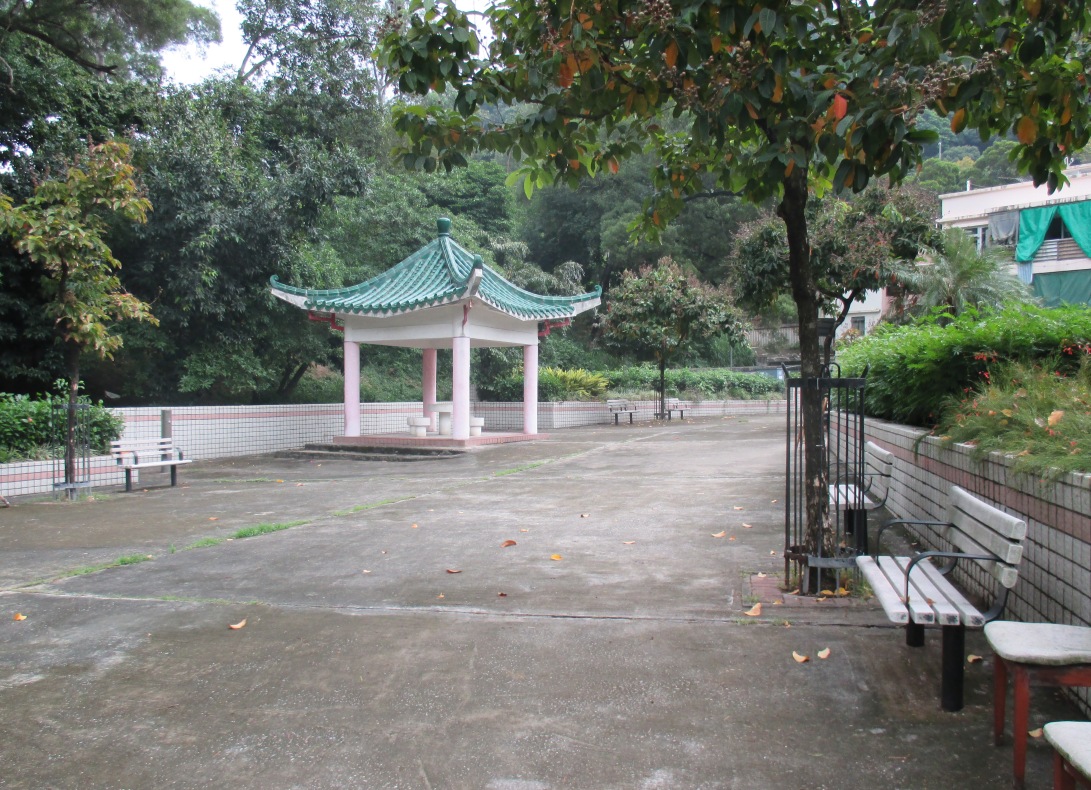In a megacity where public space is scarce, local parks are often called ‘three-cornered shit pits’. Now a group of Hong Kong designers is hoping to make them more inclusive, playful and celebratory of the city itself. Mary Hui reports

Dotted all over Hong Kong are small parks — officially known as “sitting-out areas” or “rest gardens” — etched deep into the urban fabric of this densely packed city. They are often located in the most unassuming of places: under flyovers, tucked between two buildings, squeezed into a leftover parcel of awkwardly shaped space. Together, they fill in the gaps of the urban landscape.
Though they vary in size, the parks are generally quite small. Whereas the typical pocket park in London is between 2,000 and 4,000 square feet, Hong Kong’s average is about 1,000 square feet, according to Susanne Trumpf, an assistant professor of landscape architecture at the University of Hong Kong, and who has studied the city’s pocket parks extensively.
To an older generation of Hong Kongers, these parks also go by a somewhat more explicit name: “three-cornered shit pit”. That’s according to Hoyin Lee, the co-founder and director of the Division of Architectural Conservation Programmes at the University of Hong Kong, and who first heard the phrase from his nonagenarian father.

“Three-cornered shit pit” initially referred to public toilets built around the city from the early 20th century onwards, after a plague swept the city in the 1890s. Because the Chinese quarters, where the plague broke out, was by then already quite built up, the government had to make do by squeezing the toilets underground or onto leftover sites that couldn’t be developed because of their small size and awkward configuration — typically a triangular shape — hence the name.
Many of those early public toilets have since been demolished. While there may not be a direct link between the toilets and today’s pocket parks, both are built on small, awkward scraps of land. In fact, as old Chinese-style shophouses known as tong lau were demolished in the city’s post-war building boom, it left behind small interstices in the urban landscape. Now, those interstices are where many pocket parks stand.
Sitting-out areas have become an important urban planning tool for a city that is constantly rebuilding, occupying spaces where old buildings once stood, filling irregular gaps between new complexes, or added to comply with new setback requirements, explains Trumpf. “The most common case would be with the smaller sitting-out areas in Central which are literally squeezed between two tong laus,” she says, referring to old Chinese-style shophouses. In other cases, a large block of old buildings is knocked down, and with new planning and building guidelines, sitting-out areas have to be added into the mix. In this sense, the sitting-out areas become a little bit like a historical record of what the city was and how it has changed. “In Hong Kong, things get rebuilt so constantly and regularly,” says Trumpf.

The parks also serve as an important and much-needed breathing space in the hyper-density of the city. Within urban Hong Kong, residents get roughly 30 square feet of open space per person, less than half of what residents in Tokyo, Shanghai, and Singapore get. Of course, this doesn’t take into account the 40% of Hong Kong’s territory that is protected as country parks. But within the city’s urban heart, open space is a scarce resource.
“If you’ve got people in a very closely packed environment, they’ve got to have some space,” says Jason Wordie, a local historian. The sitting-out areas “provide a bit of the social value” and make use of otherwise unpromising areas.
Visitors to these small parks also tend to be older, according to research conducted by Civic Exchange, a local think-tank. This doesn’t surprise Wordie. Densely built areas tend to have more subdivided accommodations, and these in turn tend to have an older, single, male demographic in them. “So if your choice is between sitting in your cubicle in your bunk bed or sitting under a tree, well, then that’s that,” he says.

The parks are as abundant as they are homogenous. On Hong Kong Island alone, which makes up a mere 7% of the city’s territory, there are some 169 such parks. Managed by the government, they all feature the same set of standardised features and furnishings.
“Uniquely generic, the sitting-out area is the quintessential Hong Kong urban typology,” Trumpf and her co-authors wrote in an academic article in 2017. To Trumpf, the sitting-out areas represent an under-tapped potential for the city to provide a network of public open space.
Now, a group of design professionals are looking to rethink the role and future of Hong Kong’s ubiquitous pocket parks. Working in small teams under the Design Trust Futures Studio program, part of the local NGO Design Trust, they came up with new designs for four pocket parks in different parts of the city. They recently rolled out prototypes, and have been working closely with the city government to build the new parks.

The goal, says Marisa Yiu, co-founder and director of Design Trust, is to re-make the parks as a representation of the city’s rich cultural heritage, history, and the diversity of needs and demographics.
“We have such unique neighborhoods,” she says. “Why not utilise something to present the local flavour instead of every park being the same, with the same equipment and the same furniture?”
Over the past year, the design teams conducted extensive research and site analyses to come up with designs that more closely reflect the city’s layered narratives, and that provide inclusive spaces for rest and play.

At a somewhat drab and gritty park located directly across a betting station and frequented by horseracing gamblers, the designers noticed a shortage of chairs, with many of the elderly men sitting on or squatting by planters. So they have added bright pink moveable seats and tables. At another park, located under a flyover, the designers opted to play with vertical height, installing an undulating LED installation and perhaps even climbing nets.
The design teams unveiled their 1:1 prototypes and scaled models at an exhibition in January. Each was completely different and tailored to the geographic, historic, demographic context of each site –– a marked contrast to the uniform designs of the parks currently. And in March, prototypes were displayed at one of the parks, drawing curious passersby as they tested out the bright pink chairs and tables.

Although people generally thought that the bright pink colour of the proposed design was positive, there were worries that the use of steel may attract thieves given the material’s higher resell value compared to cement, stone, or recycled plastic. Another prototype, featuring a slide and a tunnel for the Yi Pei Square Playground site, proved very popular with people of all ages, especially young kids because of the sense of discovery that the equipment encouraged.
The Design Trust is now pushing to make the proposed designs a reality over the next 1–2 years. “Our aim is to guide, disrupt, and challenge the question of what public space is and what it can do for the community,” said Yiu. “The parks are a representation of how we respect our space.”
Mary Hui is a freelance reporter based in Hong Kong
